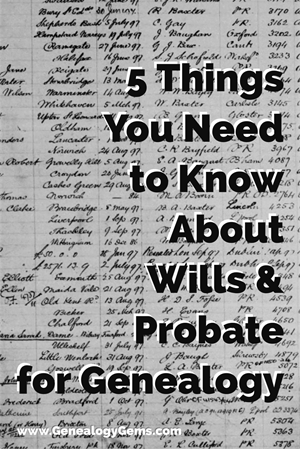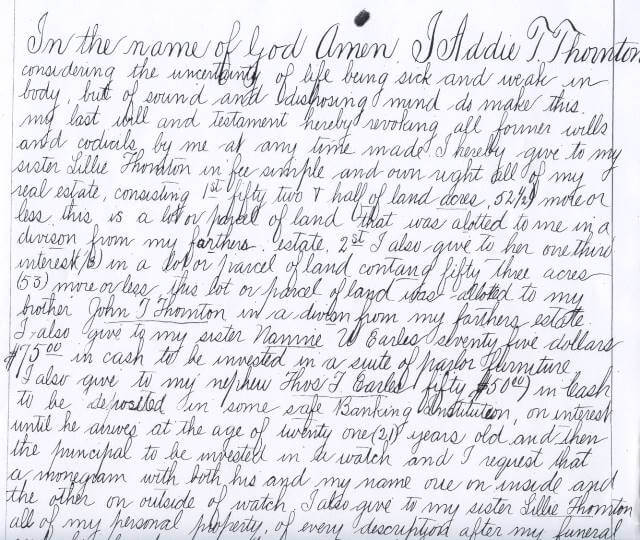Genealogy Gems Podcast Episode 236
My how time flies and it’s flying further and further way from when our ancestors’ got their photographs taken, which can make the task of identifying and dating them harder and harder. Don’t fret my friend because I have the coolest free tech tool for you that can help you zero in on the date of your photos.
David Lowe a Specialist in the Photography Collection of the New York Public Library will be joining me today to tell you all about it.
In this episode we’re also going to be talking about some important genealogical records that you may be missing at Ancestry.com. I wrote about How to Find and Browse Unindexed Records at Ancestry in the Genealogy Gems newsletter which linked over to my article on our website, but this is so important that we need to talk about here together.
Podcast host: Lisa Louise Cooke
December 2019
Download the episode mp3
The Mailbox

From Kristine:
In my newspaper research (at) newspaper.com I came across election results that included, of course, all towns, townships, and the county covered by the newspaper.
Though the election results were not of interest to me in my research, I was pleased to see residential information that can help me confirm my ancestors’ in records that include their address or town.
Boundaries moved over the years, so my family may not have moved but their location may have been reassigned which gives me pause as I locate them in records.
In this particular case, the last location I had for them was not listed BUT the new location was detailed under the new name.
Using “Election results” search I found more information in my research area. Hoping this information will help other genealogists like me.
Your podcasts and other offers are the best I’ve found and worthy of my genealogy budget. I’m happily retired and have time to soak it all in. I’m using your Research Plan to manage my findings!
From Mark:
I am the de facto family historian for my huge Italian family.
We had our 62nd annual family reunion last July and as I have explained to family members who is a 3rd cousin and who is a 2nd cousin once removed I am flummoxed as to why they have left ambiguity in family relationships.
Why are 2nd cousins’ parents and 2nd cousins’ children both referred to as “once removed”?
Why isn’t there a distinction, such as “2nd cousin once ascended” and “2nd cousin once descended” so the vertical moves through the tree can be distinguished?
I am a data scientist so I don’t like ambiguity!
From Lisa:
Including ascending and descending indeed can be done when explaining relationships. Read more at:
The Relationships and Cousins page at the Weinel Genealogy website:
http://www.weinel.com/family/relations.html
Wikipedia conversation thread on Cousins: https://en.wikipedia.org/wiki/Talk%3ACousin%2FArchive_4?redirect=no
From Audrey in Texas:
I am new to podcasts and love listening to your podcasts.
I started a new job over 2 months ago and your podcasts keep me sane.
First of all, driving from Austin to San Antonio Texas is a tough drive and I am now doing it weekly. I was struggling to fit in any genealogy with my new job so I turned to podcasts to keep me in the genealogy loop. I have listened to many different podcasts and yours is my favorite. I learn something new every week and actually quite entertaining! It really helps pass the drive timely quickly. Thank you!
Email Lisa Louise Cooke:
If there’s something you’d like to hear on the podcast, or if you have a question or a comment like Kristine, Mark and Audrey did, drop me a line here or leave a voice mail at (925) 272-4021.
GEM: Storyworth
My favorite part about the holidays is reconnecting with family. I love swapping stories and reliving moments together. But, keeping these memories alive can be hard. That’s why I’m giving my family the most meaningful gift this year – StoryWorth.
StoryWorth is an online service that helps you engage with your loved ones, no matter where they live, and help them tell the story of their lives through unique and thought-provoking questions about their memories and personal thoughts.
The way it works is that : Every week StoryWorth emails your family member different story prompts – questions you’ve never thought to ask. Like, “What have been some of your life’s greatest surprises?” and “What’s one of the riskiest things you’ve ever done?”
After one year, StoryWorth will compile every answered question and photo you choose to include into a beautiful keepsake book that’s shipped for free. That way it’s not just a one-time conversation, but a book that you can refer to again and again as a vital part of your family’s history.
You never know what family history StoryWorth will uncover, not just about your loved one and family, and sometimes even yourself!
Preserve and pass on memories with StoryWorth, the most meaningful gift for your family.
Sign up today by going to StoryWorth.com/GEMS. You’ll get $20 off your first purchase!
GEM: The New York Public Library
Interviewee: David Lowe, Specialist II from our Photography Collection
New York Public Library Photographers’ Identities Catalog: http://pic.nypl.org/
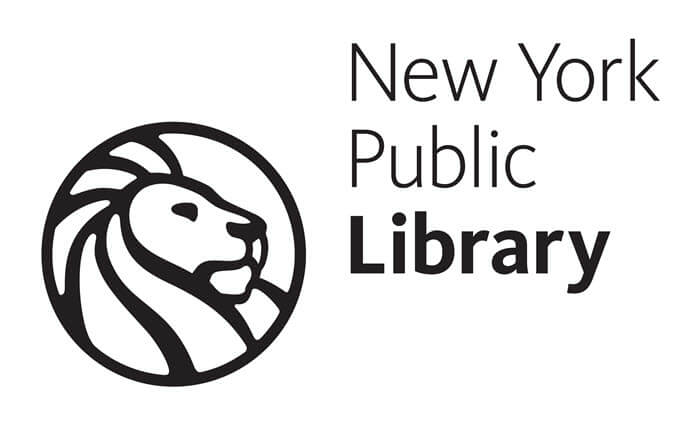
Do have old family photos that you’re trying to identify? Hopefully they have the photographer’s imprint on them, which might include their name and even their location. And if they do, then you can research that photographer to try and find out when they were in business, and therefore, narrow down the time frame when the photo was taken.
In this gem we’re going to take a look at a website that can help you research those photographers. It’s called the Photographers’ Identities Catalog, also known as PIC, and it’s hosted by the New York Public Library.
It’s an experimental interface to a collection of biographical data about photographers, studios, manufacturers, and others involved in the production of photographic images.
David Lowe, Photography Specialist at the New York Public Library, is the driving force behind this project and I’ve invited him to the podcast to help us tap into this terrific resource.
What are the origins of this database?
The information has been culled from trusted biographical dictionaries, catalogs and databases, and from extensive original research by NYPL Photography Collection staff.
The function of the database is two-fold:
- To assist with the genealogical research of the photographers
- Strive to capture the history of photography
What time frame does the database cover?
The emphasis is on 19th to mid-20th century photographers, and is international in scope.
How we can use PIC to find the photographers we’re researching?
The database includes over 130,000 names, and leans toward showing broader search results.
Start here at the New York Public Library’s Photographers’ Identities Catalog (PIC) database website:

NYPL Photographer’s Identifies Catalog PIC website
Enter the photographer’s name in the search box. You may way to start broad by just entering the surname, depending on how common it is.

Searching for photographers at PIC
Use the filters on the left side of the website to narrow your search. You can also click the magnifying glass icon in the upper right corner to reveal a search box where you can enter a location.
If you find an error or would like to contribute information to the database, click the Feedback button in the bottom right hand corner.
Here’s an example of a search I ran for Minnesota photographer, C. J. Ostrom:
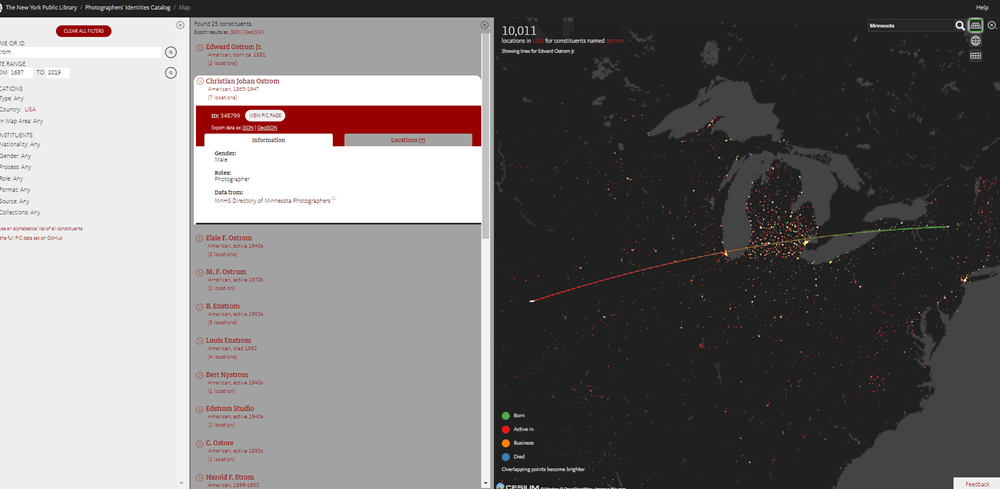
Searching for a photographer in the NYPL Photographers’ Identities Catalog (PIC)
Why are there so many photographers listed on a tiny island off the west coast of Africa?
That’s not actually an island, and there’s not actually anyone there. That point is located at the coordinates 0’ latitude & 0’ longitude, and we use it to map information when we don’t know a location (in the cartography world, it’s often called “Null Island”). If, for instance, we know someone was born in 1872, but we don’t know where, we put the point on Null Island. You can help us evacuate the island by finding locations we’re missing!
Lisa’s Search Tip:
One of the ways I research photographers is by searching the US Federal census. In 1880 for example you can specifically search by occupation and location. Enter “photographer” in the occupation field and enter a location if known. For the entire United States that results in about 9100 photographers in 1880.
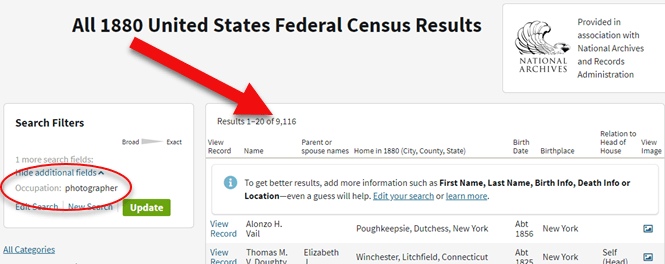
How to search the 1880 census for photographers. Results: 9,116!
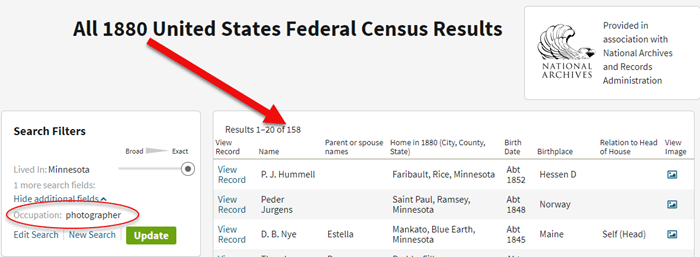
Searching for photographers in Minnesota in the 1880 US Federal Census.
Can users submit corrections or new information that you don’t have?
NYPL welcomes your contributions. Use the feedback link in the bottom right of the map on the website or email pic@nypl.org.
It is helpful if you include the Record ID number to identify the photographer in question. That ID can be found after the Name, Nationality and Dates of the constituent.
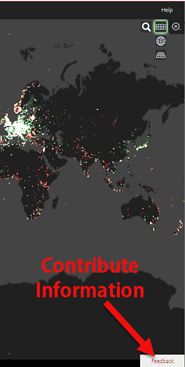
How to contribute photographer information to NYPL’s PIC database
Can we download the data?
Yes! The data is available for download from this GitHub repository. You can browse an alphabetical list of all constituents. You can also export the first 1000 search results from the map interface.
GEM: How to Find and Browse Unindexed Records at Ancestry
The Better Browsing Checklist
Read the full article here with all of the step-by-step instructions covered in this episode:

Profile America: Bill of Rights Day
Saturday, December 14th.
Tomorrow is Bill of Rights Day, in honor of the day when the first ten amendments to the Constitution took effect in 1791.
The Bill of Rights added specific freedoms and government limitations to the three-year old Constitution. Among them are enshrined freedom of religion, speech, the press, the right to peaceably assemble and bear arms. Also the right to petition the government and be secure in property.
When the Bill of Rights was passed, America’s population of about 4 million in the then-14 states had available about 100 newspapers exercising the First Amendment freedom contained in the Bill of Rights.
Today’s population is around 330-million, and chooses from nearly 7,500 newspaper publishers nationwide.
You can find more facts about America from the U.S. Census Bureau online at www.census.gov.
Transcription of the 1789 Joint Resolution of Congress Proposing 12 Amendments to the U.S. Constitution
Source: National Archives. Learn more at Founding Documents.
Congress of the United States begun and held at the City of New-York, on Wednesday the fourth of March, one thousand seven hundred and eighty nine.
THE Conventions of a number of the States, having at the time of their adopting the Constitution, expressed a desire, in order to prevent misconstruction or abuse of its powers, that further declaratory and restrictive clauses should be added: And as extending the ground of public confidence in the Government, will best ensure the beneficent ends of its institution.
RESOLVED by the Senate and House of Representatives of the United States of America, in Congress assembled, two thirds of both Houses concurring, that the following Articles be proposed to the Legislatures of the several States, as amendments to the Constitution of the United States, all, or any of which Articles, when ratified by three fourths of the said Legislatures, to be valid to all intents and purposes, as part of the said Constitution; viz.
ARTICLES in addition to, and Amendment of the Constitution of the United States of America, proposed by Congress, and ratified by the Legislatures of the several States, pursuant to the fifth Article of the original Constitution.
Article the first… After the first enumeration required by the first article of the Constitution, there shall be one Representative for every thirty thousand, until the number shall amount to one hundred, after which the proportion shall be so regulated by Congress, that there shall be not less than one hundred Representatives, nor less than one Representative for every forty thousand persons, until the number of Representatives shall amount to two hundred; after which the proportion shall be so regulated by Congress, that there shall not be less than two hundred Representatives, nor more than one Representative for every fifty thousand persons.
Article the second… No law, varying the compensation for the services of the Senators and Representatives, shall take effect, until an election of Representatives shall have intervened.
Article the third… Congress shall make no law respecting an establishment of religion, or prohibiting the free exercise thereof; or abridging the freedom of speech, or of the press; or the right of the people peaceably to assemble, and to petition the Government for a redress of grievances.
Article the fourth… A well regulated Militia, being necessary to the security of a free State, the right of the people to keep and bear Arms, shall not be infringed.
Article the fifth… No Soldier shall, in time of peace be quartered in any house, without the consent of the Owner, nor in time of war, but in a manner to be prescribed by law.
Article the sixth… The right of the people to be secure in their persons, houses, papers, and effects, against unreasonable searches and seizures, shall not be violated, and no Warrants shall issue, but upon probable cause, supported by Oath or affirmation, and particularly describing the place to be searched, and the persons or things to be seized.
Article the seventh… No person shall be held to answer for a capital, or otherwise infamous crime, unless on a presentment or indictment of a Grand Jury, except in cases arising in the land or naval forces, or in the Militia, when in actual service in time of War or public danger; nor shall any person be subject for the same offence to be twice put in jeopardy of life or limb; nor shall be compelled in any criminal case to be a witness against himself, nor be deprived of life, liberty, or property, without due process of law; nor shall private property be taken for public use, without just compensation.
Article the eighth… In all criminal prosecutions, the accused shall enjoy the right to a speedy and public trial, by an impartial jury of the State and district wherein the crime shall have been committed, which district shall have been previously ascertained by law, and to be informed of the nature and cause of the accusation; to be confronted with the witnesses against him; to have compulsory process for obtaining witnesses in his favor, and to have the Assistance of Counsel for his defence.
Article the ninth… In suits at common law, where the value in controversy shall exceed twenty dollars, the right of trial by jury shall be preserved, and no fact tried by a jury, shall be otherwise re-examined in any Court of the United States, than according to the rules of the common law.
Article the tenth… Excessive bail shall not be required, nor excessive fines imposed, nor cruel and unusual punishments inflicted.
Article the eleventh… The enumeration in the Constitution, of certain rights, shall not be construed to deny or disparage others retained by the people.
Article the twelfth… The powers not delegated to the United States by the Constitution, nor prohibited by it to the States, are reserved to the States respectively, or to the people.
ATTEST,
Frederick Augustus Muhlenberg, Speaker of the House of Representatives
John Adams, Vice-President of the United States, and President of the Senate
John Beckley, Clerk of the House of Representatives.
Sam. A Otis Secretary of the Senate
Sources:
- Bill of Rights Day, accessed 8/16/2019
- 1790 population
- Current U.S. population
- Newspapers in 1790, accessed 8/16/2019
- Newspaper publishers, County Business Patterns, NAICS 511110
See Lisa in Person:
Genealogy Roots
We’re bringing Genealogy Roots to St. George, Utah which is a gorgeous location and just a few hours drive from Las Vegas.
Learn more here.
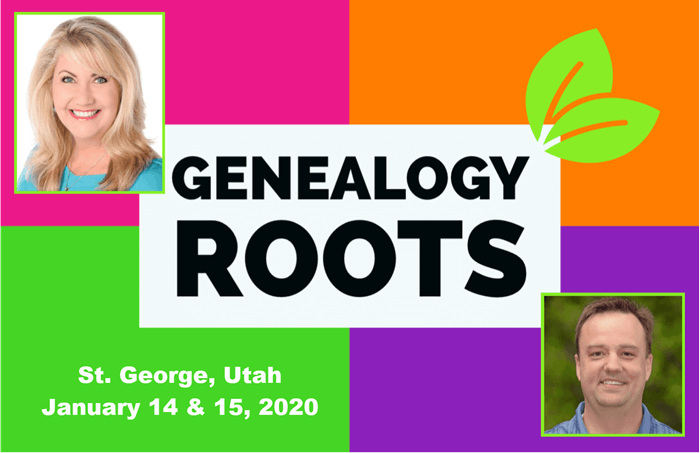
Rootstech 2020
Learn more here.
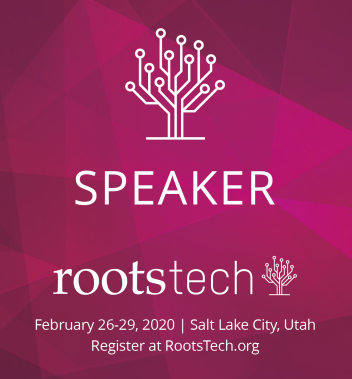
Using Wills and Probate Records in Genealogy Research
Using wills and probate records for genealogy can lead to unexpected “inheritances” of your own: clues about relatives’ identities, wealth, personal belongings, and family relationships. Wills can reveal great family stories, too: researcher Margaret Linford entertains her mother with them during trips to the courthouse. Here’s how wills can help your family history—and Margaret’s tips for finding and using them.
Using Wills and Probate Records in Genealogy Research
“Where there’s a will, there’s a way” to find out more about your family’s history.
Wills are legal records created to direct the settlement of a person’s property and other final affairs after his or her death. Probate (or estate) records are created after an individual’s death as part of the legal distribution of the estate and payment of debts. You’ll often find wills as one of many kinds of the documents included in probate records.
Wills and other probate records are valuable research tools, but are frequently neglected as sources of genealogical information. People often focus strictly on birth, marriage, and death records when searching out their family histories. If you rely solely on those records, your research will encounter many brick walls in the early 1800’s.
Probate records and land records were often the only official documents left behind to tell the stories of ancestors who lived prior to the legal requirement for the registry of births and deaths.
Wills of slaveholders can also be valuable tools in conducting African-American genealogical research. Before the Civil War, enslaved people were listed in wills because they were valuable property of slaveholders.
For instance, in the 1863 Smyth County property tax records, it is noted that Abijah Thomas owned 56 slaves, which were valued at $53,800. Some were given their freedom within wills, while others were transferred to other members of the family or sold. For instance, one of the first wills recorded in Smyth County is that of Hugh Cole.
Within his will, he says the following: “I bequeath to my beloved wife Martha Cole a negro girl named Amanda which she is to hold during her natural life.” The mention of an enslaved person in a will—along with any personal description of him or her—may be the only surviving document to mention that person by name.
Within another Smyth County will, recorded on February 20, 1835, a woman named Elizabeth Blessing left the following directive: “I will and desire that my negro woman Betty be free at my decease, and must see to her own support during her life, as I shall not make any provision for her out of any part of my estate.”
Information Found in Wills Varies
You can find just about anything in a will!
One organ, one compass, chain and plotting instruments, two chests, one hat rack, one music rack, one old United States map. These are some of the items found in the appraisement bill of the personal property belonging to the estate of Abijah Thomas, who lived in the well-known Octagon House in Marion, Virginia.
Here is a photo of that home, now in a dilapidated state, from a Wikipedia file image (click image for attribution.)
Also included in his personal property is a church bell. The story behind the bell is intriguing and illustrates the significance of the probate process.
Abijah Thomas utilized the bell at his foundry works in Marion, Virginia, to indicate shift changes. For decades, the oral history surrounding the bell indicated that he had donated it to the Wytheville Presbyterian Church before he died. The court documents reveal a different story.
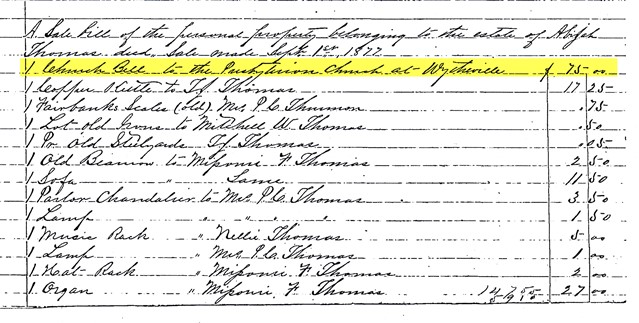
Court document regarding the church bell
Since Abijah died intestate, the court appointed three men to appraise his personal property. During this process, the bell was valued at $75. It was sold on September 1, 1877, to the Presbyterian Church in the town of Wytheville, Virginia, as shown in the above list of items sold from his estate.
This document dispels the family myth surrounding the church bell. This is just one of many examples of the types of stories you find in probate records in courthouses all across the United States.
Genealogical Information May be Found in a Will or Probate Records
Wills and probate records can pass along unexpected genealogical wealth to you. You may find the following information in them: date of death (or approximate date of death), name of spouse, children, parents, siblings and their place of residence, adoption or guardianship of minor children, ancestor’s previous residence, occupation, land ownership, and household items.
Probate records also contain such interesting stories that they can even be read for entertainment!
Whenever I go on a research trip, I usually drag some poor, unsuspecting soul along with me. That person is usually my Mom. While she enjoys the scenery on our drive to different courthouses, she rarely enjoys the time spent at the courthouse.
Some of the research I do requires me to stay at the courthouse for several hours. That has posed a problem in the past since I haven’t known how to keep Mom occupied. But I have found the perfect solution. When we arrive at the courthouse, I find an old will book and let her start reading.
My mom enjoys reading the stories in these old—and sometimes tattered—books. One of her favorite stories came from a will in Henry County, Virginia. It is the will of Addie T. Thornton and reads as follows:
“I also give to my nephew Thomas T. Earles, fifty ($50) in cash to be deposited in some safe Banking Institution, on interest until he arrives at the age of twenty-one (21) years old and then the principal to be invested in a watch and I request that a monogram with both his and my name, one on inside and the other on outside of watch.”
Obviously, Addie Thornton cared deeply for her nephew, Thomas, and wanted to make sure he remembered her for the rest of his life.
Here’s part of Addie’s will, followed by a closeup image of the lines about the watch:
Stories like these are so much more meaningful than just a date of birth, marriage or death. Wills can help us know who these people were, how they lived and what was important to them during their sojourn here on earth. We can learn of their struggles and their successes. We can tell what their lives were like by reading through the lists of household items included in the inventories that are recorded.
And with stories like Addie’s bequest of the watch, we can also learn about ancestors’ personalities and how they expressed (or occasionally withheld) love for others through the final disposition of their belongings.
How a Will is Created
Before beginning probate record research, it is important to be familiar with the probate process and legal terminology associated with these records. It is estimated that, prior to 1900, about half of the population either left a will or was mentioned in one. Those who died having left a will are said to have died “testate.” Those who died without leaving a valid will died “intestate.”
A typical, legally-recognized will contains certain critical elements. It should be in written form and it must have signatures of the person leaving the will (“testator”) and witnesses, who attest to the validity of the document. A codicil is a document created by the testator to amend the will.
Once the testator dies, the will is presented to the judicial authority by a family member or executor/executrix (person appointed by the testator to see that his/her wishes are carried out), accompanied by a written application or petition for probate.
These petitions include names and addresses of the closest living relatives. The court then admits the will to probate and sets a hearing, providing an opportunity for interested parties to contest the will. The will is then recorded and the executor is given the authority to settle the estate. During this process, an inventory of the estate is made.
Some wills contain detailed information, regarding the testator’s final wishes. At times, these requests will shed light on relationships that might not otherwise be discovered. This was the case for a will on file at my local courthouse. Due to the nature of the requests made by the testator, I have changed the last name of the family to Smith. This wife was, obviously, upset with her husband and the circumstances of their marriage, providing clear details of her grievances for future generations.
“Since my husband has never made me a part of his family and has completely cut me out of ever living in Chihowie, Virginia [the husband’s hometown], or never provided me with a home or paid any of my bills and has broken all marriage contracts that we agreed to—I hereby decree that I be buried in Round Hill Cemetery at Marion, Virginia, where I own a lot—that my body or anything I own or possess will never be taken into Chilhowie or the Smith household.
My husband has never taken me into his own home, and furthermore stated, backed up by his nephew and his wife, whom he turned everything over to shortly after our marriage—that I would never own or live on a foot of the Smith ground, even though I have tried to build or buy or remodel a home in Chilhowie, Virginia, at my own expense.
“I give all books and material things pertaining to books to the Smyth County Library, Marion, Virginia, as I am sure that my family would not want anything to fall into the hands of anyone who has mistreated me.
“My husband has kept our marriage strictly on a time clock basis since his nephew and his wife moved back to Smyth County, and under their influence he comes at 6:30 or 7:00 p.m. (whichever is convenient to them) or later, and leaves promptly in the morning by 8:00 or 8:30 a.m., never calling during the day or show[ing] any sign of caring. He changed completely after they returned to Chilhowie to break up the marriage. Therefore, if I am still his wife, or otherwise, see that my wishes are carried out and that my remains and possessions remain in Marion.”
Where to Find Wills and Probate Records
The best place to search for a will is at the courthouse where your ancestor lived, if you can reasonably go there yourself.
Since the probate process is a function of state governments, the laws governing the maintenance of these records and their location will vary by state and should be researched before making a trip to the courthouse.
For example, in Virginia, probate records are maintained within the Circuit Courts and independent cities. In Massachusetts, probate records are found in county Probate Courts.
A useful resource for figuring out how U.S. probate records are organized state-by-state is free on the Ancestry.com wiki: Red Book: American State, County and Town Sources. Scroll down to click on the name of the state in question. Then go to the right side and click on the probate records link for that state to read about these records.
Once you have determined where the wills for your state/county are housed, the next step in the research process is to locate the Index for Wills. Even–perhaps especially–if you are unsure of the date of death for one of your ancestors, you may want to look through the index of wills (an example is shown here). Even when no specific death record exists, you may be surprised to find probate records that reveal the date of death, a list of heirs and more.
There will, most likely, be several index books, organized by year spans. These books serve as a compass, pointing you to any available probate records that may include your ancestors. The index is divided by devisor (the person making the will) and devisee (any person who is named in the will, as the recipient of property).
The research process will be incomplete if you do not conduct a search for your ancestors among the list of devisees. Even if you fail to find their names among the devisors, they could have inherited property from someone else.
Probate records include more than just the will of an individual. You may find letters of administration, lists of heirs, inventories, bills of appraisement, guardianships and other documents related to the settlement of an estate. In some counties, all these documents are found in the same collection. Other counties maintain these records in separate collections. It is important to understand the manner in which probate records are organized for your particular county.
The probate research process should not be rushed. Valuable records may be overlooked when time dictates the quality of your research. For this reason, it is important that you set aside ample time to comb through the probate records. If you find yourself confused about abbreviations or the location of records within the courthouse, there is usually someone in the records vault who would be happy to assist you. Never be afraid (or embarrassed) to ask for help.
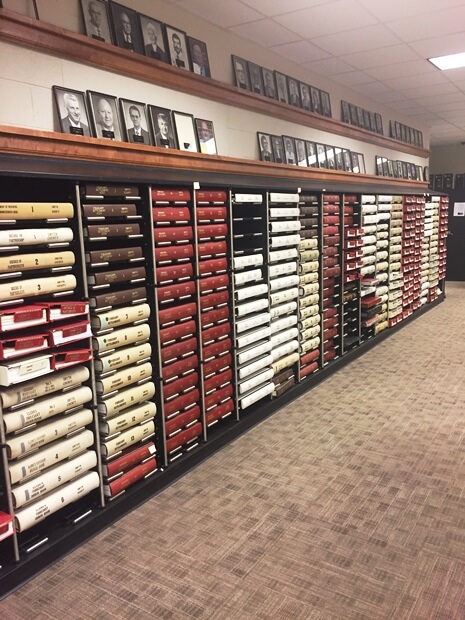
Fortunately for many of us who can’t easily get to every ancestor’s courthouse, there are some wills available online on genealogy websites, including two of the genealogy giants, FamilySearch and Ancestry.com.
For example:
- Subscription website Ancestry.com has made it a priority to curate an enormous collection of wills and probate records from all 50 states. At last count, this collection has more than 170 million records—and they keep adding to it.
- The free FamilySearch.org hosts millions of probate records from the U.S. and around the world (click here to browse their probate and court record collections). Many of these collections are marked “browse-only,” which means they are not yet searchable by name online. You just have to page through them. Click here for instructions on reading browse-only records on the site (it’s not that difficult—and did I mention they’re free?).
Additionally, libraries or genealogical societies in your ancestor’s hometown or county may have books with abstracts from local wills or other resources related to local probate record research.
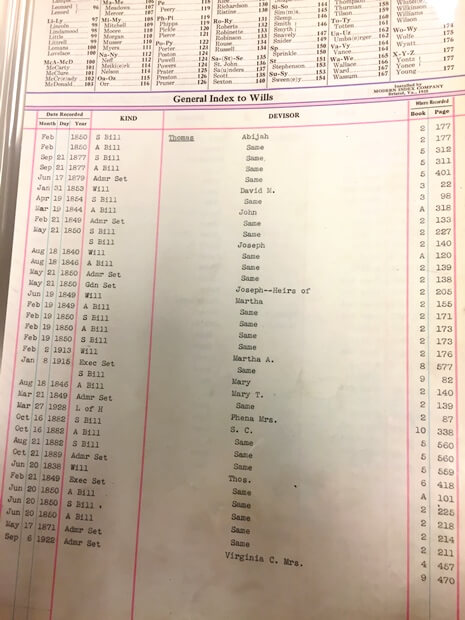
General Index to Wills
Well Worth the Effort
Finding the will of one of your ancestors is an amazing experience. Walking into the vault of a courthouse sometimes feels like walking into a time machine. As you read through the pages that tell of people who lived so long ago, you feel like for even just a small moment that you have gone back in time. You are sitting with them and hearing their stories whispered through the aging and brittle pages that have been left behind. They are all there just waiting to tell their stories. So take the opportunity to go to the courthouse and “meet” your ancestors through the one of the last—and perhaps one of the most revealing—documents they may ever have written: their wills.
Researching Wills and Probate Records: Your Next Steps
Take your genealogy research to the next level by planning a trip to a courthouse to retrieve records like wills and probate records. These articles and podcast episodes will help you get ready:
- Why you should be researching court records
- Success story: Genealogy research trip produced amazing family history find
- Premium Podcast Episode 128: Courthouse research tips (for Genealogy Gems Premium subscribers)
Disclosure: This article contains affiliate links and Genealogy Gems will be compensated if you make a purchase after clicking on these links (at no additional cost to you). Thank you for supporting Genealogy Gems!

Margaret Linford is a professional genealogist who specializes in the Mid-South Region of United States research and has logged over 20,000 research hours. Born and raised in Virginia, she has enjoyed traveling the world, and now lives in her childhood hometown with her husband and children. She enjoys teaching her children about heritage, taking them along on research trips and serving as President of the Smyth County Genealogical Society.



